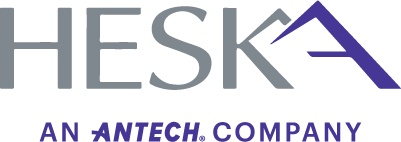Meeting Clients’ Expectations Through Equipment Financing
I remember buying my first computer. It was a great idea. The purchase took about 3 hours. The computer salesperson diligently and thoughtfully asked a number of questions about how the computer would be used to ensure the right fit. If I remember correctly – I opted for the 64 MB model. Then he thoroughly educated me on set-up and operation before sending me on my way. I have had many computers since then and my most recent computer purchase took about 20 minutes – most of that was time waiting in line at the cashier. Prior to going to the store I had done my research. When I got to the retail outlet the salesperson’s job became one of confirming my requirements and asking a few questions about potential future use to ensure I had the right features. Clearly the role of sales has changed.
Today’s consumer is far more knowledgeable about whatever they are buying – computer, vehicle, or excavator, or even an ultrasound unit, they have done their research – mostly on-line. They know before they walk into the store or press “add to cart” – precisely the model, colour, features, and comparative value.
The same can be said about shopping for professional services. Buyers of services will use the Internet to research providers. Rather than comparing model, colour, and features they are more likely looking to find a menu of services provided and especially for referrals/recommendations – information that will give them confidence they have selected the right provider. Marketing becomes a bigger factor by developing a compelling website, gaining search engine optimization (SEO), and mastering social media to impact consumer’s choices.
The role of sales becomes one of consultation – to ensure that the customer (or potential customer) has considered all the options and then confirm the sale. And a good sales consultant will continue to maintain contact and anticipate changes and thereby create future transactions.
So how does all of this apply to financing equipment for a veterinary practice? Well, an equipment finance professional will be very knowledgeable and propose the best finance product and structure to suit your practice and situation. He or she will act as your equipment finance consultant. They will ask the necessary questions and propose a finance structure that best suits your needs – like cash conservation or tax advantages or inventory management.
At times a veterinary practice will have available cash and access to lines of credit. The key question to ask is “what is the most effective use of cash?” The best answer is: Use it for areas of the business that increase revenue per client/ visit, like – inventory, marketing, expansion, and education. Using lease financing for equipment acquisition allows you to hold onto cash so that it is available when needed. Cash conservation is just one of the many reasons why equipment leasing works for veterinary practices.
Paying for equipment while it generates revenues (or protects profits) is far more effective than paying cash for equipment before it works for you. A qualified finance consultant will understand the cost/revenue per use and structure an option that allows you to pay for equipment while it creates revenue for your practice.
You may be asked questions about planned growth and whether or not the equipment will meet the future demands of your business. Leasing enables veterinary practices to acquire equipment with more functionality than could have been acquired through paying cash. When you pay cash you may be limited to the equipment and features you buy because of capital restrictions. Making monthly payments makes getting the equipment you need more manageable.
Veterinarian clients have increasing expectations. They have done their research into procedures and treatments for their pets. They want – and demand, that their pet’s experience be as pain free as possible. To be on the cutting edge, remain competitive, and maximize revenue, veterinary practices need access to new technology. A good sales consultant will understand and respond to the challenges of your practice and the demands of your clients. They will act with urgency to get the financing required in place quickly and smoothly.
Diagnostic and imaging equipment either a) increases revenues, or b) decreases expenses (and it some cases both). Equipment financing can help mitigate the uncertainty of investing in a capital asset until it achieves the desired impact on the business. And, since the leasing company owns the equipment, the risk of obsolescence remains with them. That means you never have to hang onto old technology because “you own it”.
